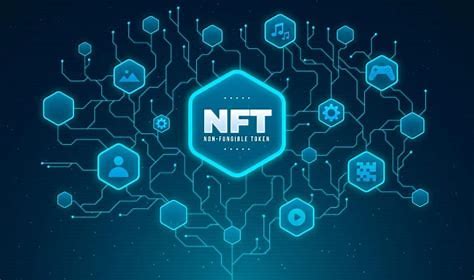In the evolving landscape of decentralized finance (DeFi) and Web3, one concept that’s gaining momentum is Virtual NFT Lending. As non-fungible tokens (NFTs) have surged in popularity — from art and gaming items to metaverse real estate — the need to create liquidity around these typically illiquid assets has grown. Virtual NFT lending is emerging as a solution, enabling NFT holders to borrow against their digital assets without selling them.
This in-depth guide explores what virtual NFT lending is, how it works, the platforms making it possible, and the risks and benefits associated with this innovative financial tool. Whether you’re an NFT collector, DeFi investor, or curious crypto enthusiast, understanding NFT lending is key to navigating the next frontier of digital asset finance.
What Is Virtual NFT Lending?
Virtual NFT lending allows users to use their NFTs as collateral to receive loans, usually in cryptocurrency such as Ethereum (ETH), stablecoins (e.g., USDC, DAI), or platform-specific tokens. The process functions similarly to a traditional pawn system or secured loan, where the NFT acts as security until the loan is repaid.
This concept bridges the gap between DeFi and NFTs, giving digital asset holders greater flexibility and access to liquidity — especially in situations where they don’t want to part with valuable NFTs.
How Does Virtual NFT Lending Work?
Here’s a simplified step-by-step process of how virtual NFT lending operates:
- Collateralization
The borrower deposits an NFT into a lending platform as collateral. - Loan Offer
Based on the NFT’s appraised value, the platform or a lender offers a loan with a specified interest rate and duration. - Smart Contract Agreement
Once agreed, a smart contract is created to manage the loan conditions. The NFT remains locked in escrow (the smart contract) during the loan period. - Loan Repayment or Default
- If the borrower repays the loan with interest on time, the NFT is returned.
- If the borrower defaults, the lender can claim the NFT.
Depending on the platform, lending can be peer-to-peer (P2P), where lenders and borrowers interact directly, or pool-based, where liquidity providers supply funds to a pool and the protocol handles the matching.
Key Platforms Offering NFT Lending
Several protocols are pioneering the virtual NFT lending space:
- NFTfi: A popular P2P NFT lending platform where users can list NFTs and receive loan offers from other users.
- BendDAO: Offers instant liquidity for blue-chip NFTs using a decentralized lending pool. Notable for using oracle-based price feeds to value assets.
- Arcade: Focuses on high-value and institutional-grade NFT lending with support for bundled assets.
- JPEG’d: A protocol allowing users to mint stablecoins (PUSd) against NFT collateral, functioning similarly to MakerDAO but for NFTs.
Each platform has unique mechanics for valuation, liquidation thresholds, and loan terms.
Benefits of Virtual NFT Lending
- Liquidity Without Selling
NFT holders can unlock value from their digital assets without needing to sell, allowing them to hold long-term while accessing capital. - Capital Efficiency
Enables users to leverage NFTs for investments, trading, or yield farming, increasing capital utility. - Flexible Lending Markets
With P2P and pool models available, users can tailor loans to their needs, choosing rates, durations, and collateral types. - Smart Contract Transparency
Lending protocols are typically governed by transparent smart contracts, reducing counterparty risk and ensuring fair execution.

Challenges and Risks
Despite its potential, virtual NFT lending faces several challenges:
- NFT Valuation Volatility
NFTs are illiquid and often highly speculative, making price discovery difficult. A sudden drop in floor price can trigger loan liquidations. - Smart Contract Risk
Bugs or vulnerabilities in lending protocols can lead to asset loss. Audits and secure coding are essential. - Market Liquidity
If the NFT market cools, lenders may be reluctant to accept certain NFTs as collateral, reducing borrowing options. - Liquidation Penalties
In some protocols, failing to repay a loan may mean permanent loss of a valuable NFT — a major deterrent for many.
The Future of NFT Lending
As NFT adoption expands into gaming, real estate, music rights, and beyond, the potential for virtual NFT lending grows. We may soon see:
- Cross-chain Lending: NFTs on various blockchains used as collateral across DeFi ecosystems.
- Dynamic Valuation Models: Using AI or decentralized oracles to price NFTs more accurately.
- NFT Credit Scores: Systems that analyze wallet history and asset behavior to offer personalized loan terms.
Moreover, integrating virtual NFT lending into broader metaverse ecosystems could enable users to borrow funds directly within virtual worlds, further blurring the lines between digital assets and real-world utility.
Conclusion
Virtual NFT lending represents a significant leap in NFT and DeFi convergence. By unlocking liquidity and expanding financial use cases, it allows NFT holders to do more with their assets — whether it’s investing, spending, or simply staying solvent during market dips. While risks remain, innovation in this space is rapidly addressing valuation and security concerns, pointing to a more flexible and mature NFT economy.
For those active in Web3, keeping an eye on the evolving landscape of NFT finance — and virtual NFT lending in particular — is not just wise, but essential.








Leave A Reply